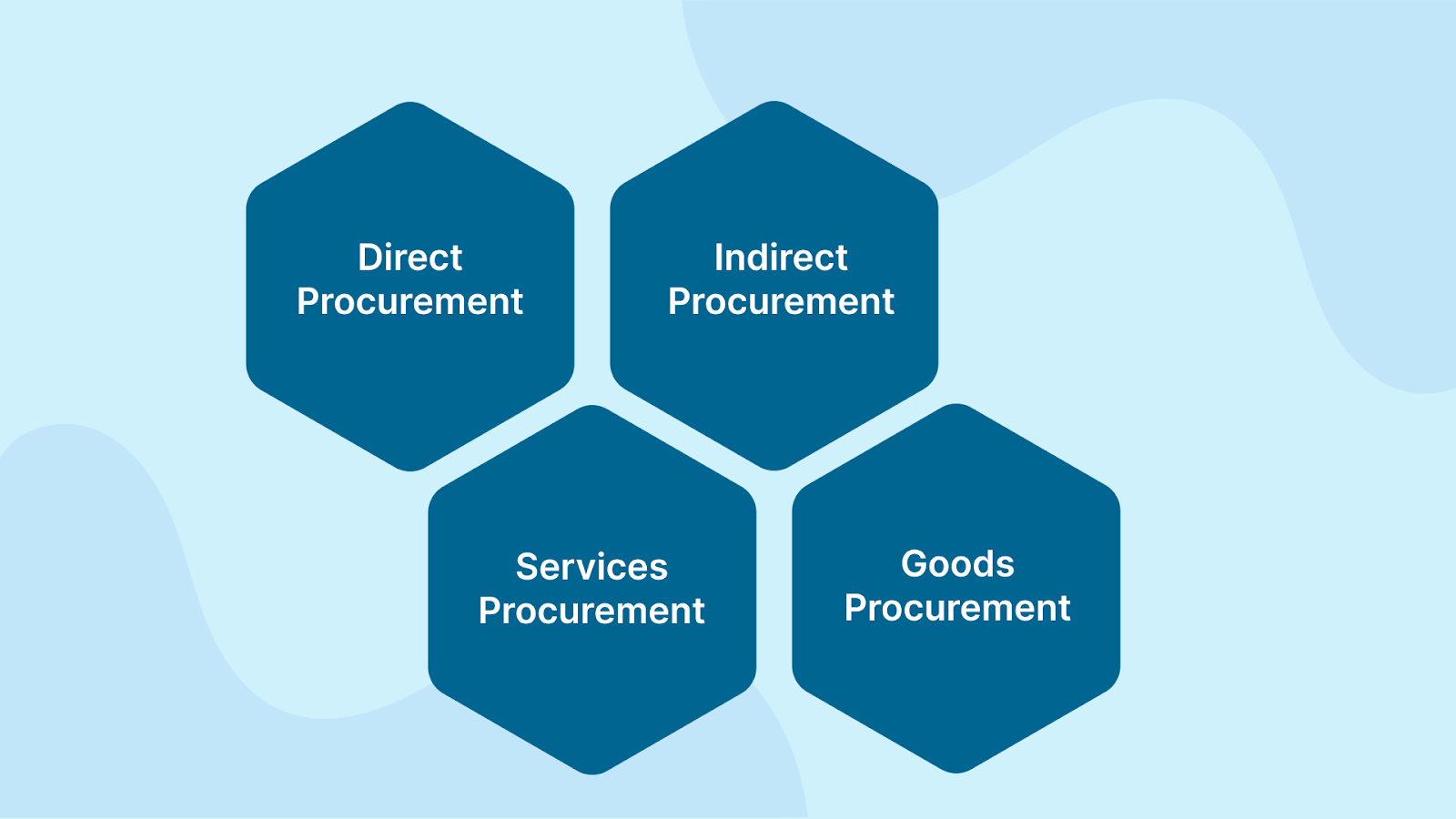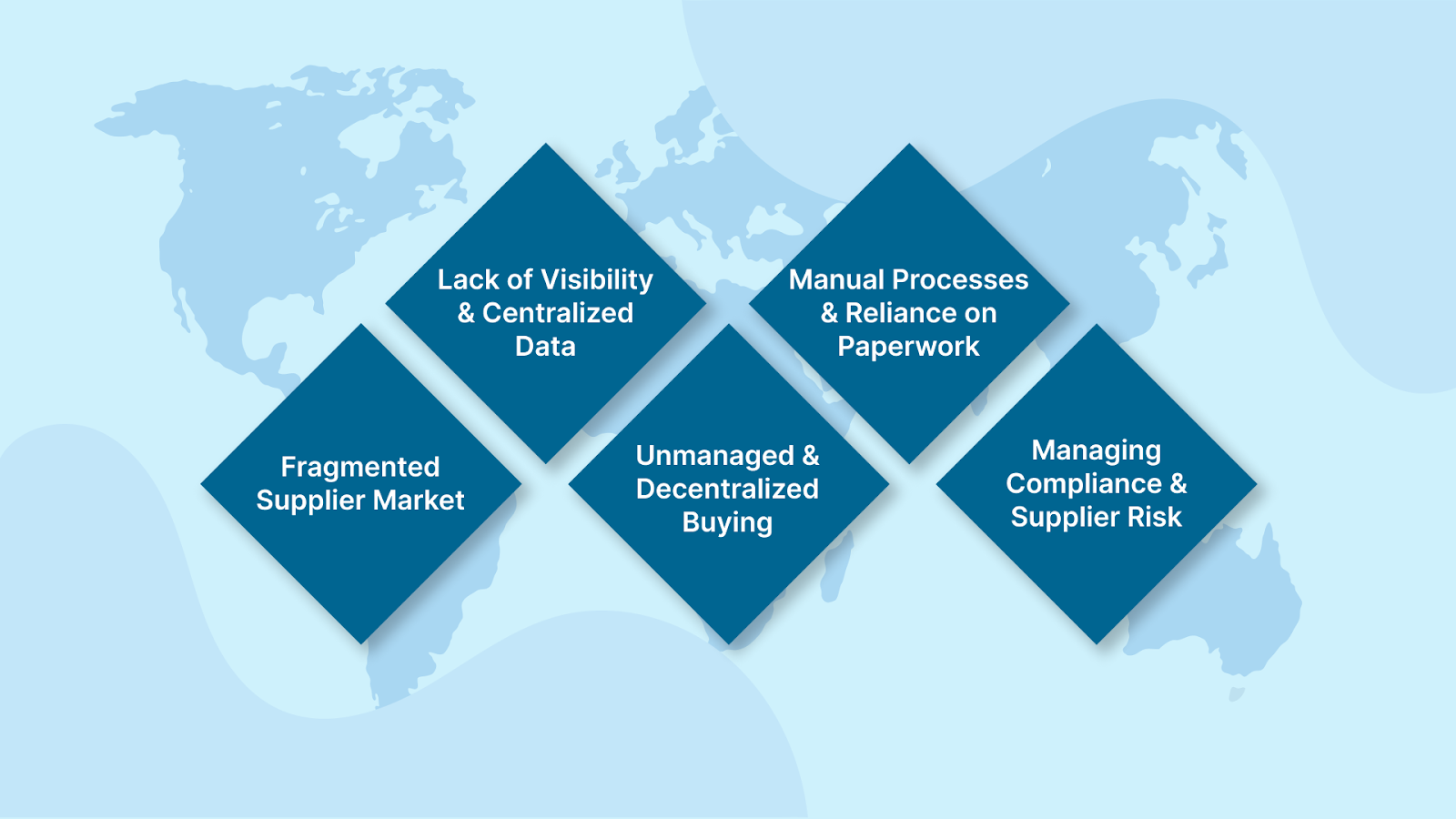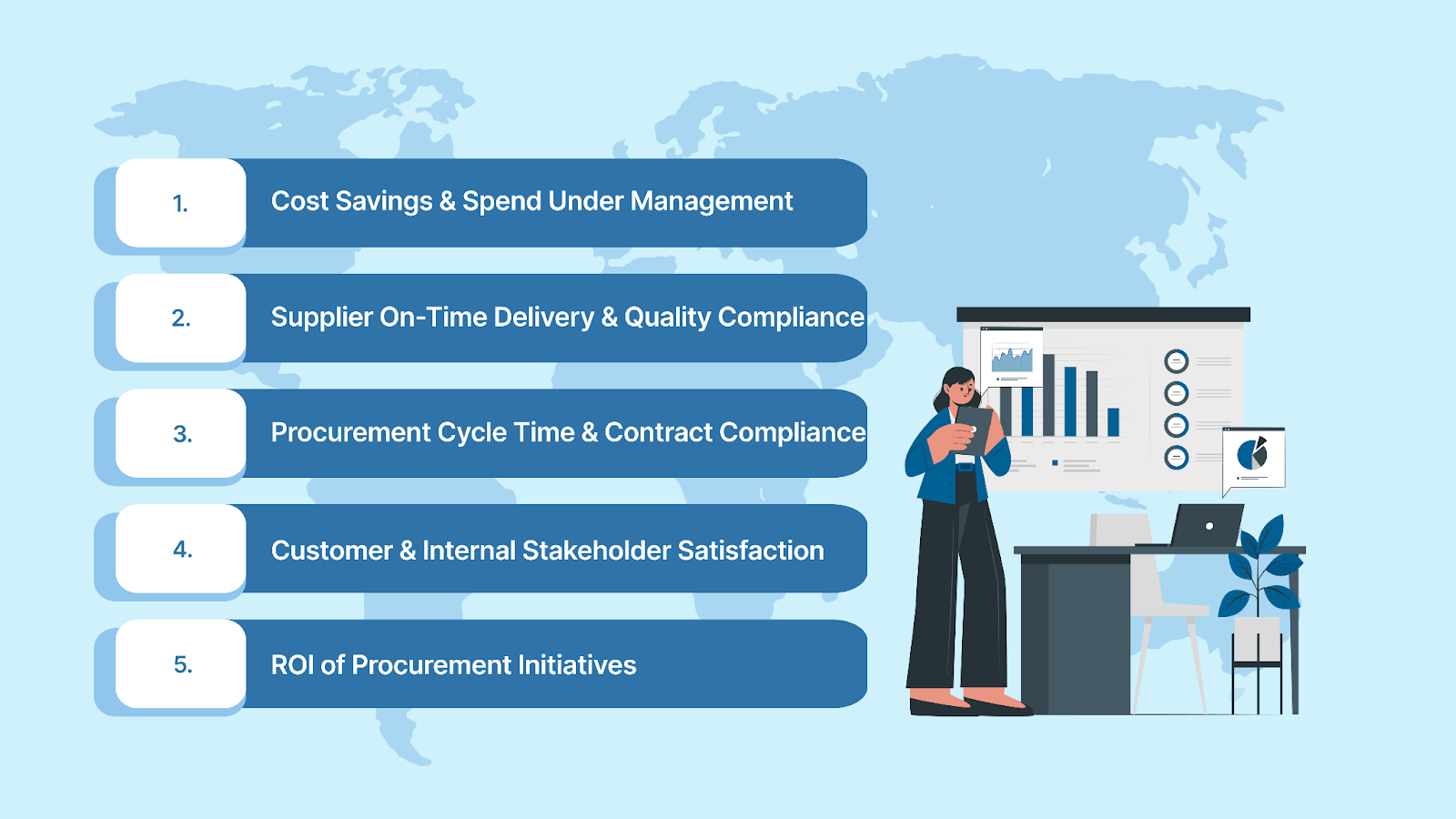In 2023, the Philippine government achieved a remarkable PHP 711 million (approximately USD 12 million) in savings through the Procurement Service of the Department of Budget and Management (PS-DBM), securing a 32% discount by purchasing standard supplies in bulk. This powerful example shows how thoughtful procurement decisions can make a real difference in managing costs and resources.
If you’re running a business or managing operations, you know how challenging it can be to get the right goods and services at the best price, without wasting time or money. Understanding the procurement process can help you take control, reduce expenses, and build stronger relationships with your suppliers.
This guide will explain the key steps involved and provide practical ways to improve procurement management in your business, especially in the fast-growing Philippine market.
Procurement is your business’s method of obtaining the goods and services needed to operate smoothly. It involves a series of planned activities designed to secure quality supplies at fair prices while minimizing risks.
In the Philippines, procurement requires managing local market conditions, supplier reliability, and regulatory standards. This helps prevent issues like delayed deliveries, price hikes, or subpar materials that can disrupt operations.
From identifying needs to making payments and evaluating suppliers, each step is essential. Effective procurement saves money, maintains inventory levels, and builds strong supplier relationships that support growth.
The goal is simple: acquire the right products or services, at the right time, and for the right price to keep your business competitive and customers satisfied.
Understanding the procurement process and the different types of procurement your business engages in is key to managing purchases and supplier relationships effectively.

By understanding the different procurement types, you can customize your approach to meet specific business needs. Procurement can be broadly categorized into three main types, each serving unique business needs:
Example: In late 2024, the government procured petroleum fuel, oil, and lubricants for official vehicles, with contract values ranging from PHP 1,080 to PHP 2,501 per transaction, showcasing efficient direct procurement in action.
This category covers goods and services supporting everyday business operations but not part of the final product, such as office supplies, equipment, and facility services. Effective management here can greatly impact cost control and operational efficiency.
Inflation was cited by 28% of procurement professionals in a 2024 survey as the biggest challenge affecting indirect procurement, while 25% identified technology and automation as key drivers for future efficiency gains. The government’s 2024 procurement plans show significant budget allocations for indirect purchases, underlining their vital role in sustaining daily business functions.
Services procurement focuses on sourcing specialized external services like IT support, consulting, and marketing, which are crucial for maintaining expertise and flexibility without expanding internal resources. The Philippine government allocates an average of PHP 121 billion annually, about 15% of the national budget, on infrastructure, equipment, materials, supplies, and services through procurement. A significant share of this budget goes toward specialized services such as IT support, consulting, and marketing, highlighting their importance in both the public and private sectors.
This refers to physical items that are typically held as inventory for either direct or indirect procurement purposes. These can include raw materials, wholesale items, office supplies, and other inventory-based goods.
Example: Goods procurement is crucial for businesses that rely on inventory management, such as retailers purchasing bulk stock to meet customer demand or manufacturers acquiring the necessary components for production.
Let’s move on to the core of procurement now, the step-by-step process that brings these purchases from request to delivery, ensuring everything runs smoothly and efficiently.
Also Read: Understanding Merchandise Inventory: Essential Guide for Sellers
Effective procurement is key to managing costs and ensuring timely deliveries. In the Philippines, the New Government Procurement Act (NGPA) and its 2025 Implementing Rules and Regulations (IRR) have brought significant improvements, including the full implementation of the Philippine Government Electronic Procurement System (PhilGEPS).
This shift enhances transparency and speeds up procurement timelines. Understanding each process step is crucial for businesses to streamline operations and stay competitive. Let’s look at the key steps that drive a successful procurement process:
Successful procurement starts with accurately identifying what goods or services your e-commerce business needs. This goes beyond just reacting to immediate requests, it involves anticipating demand based on sales trends and operational plans. In the Philippines, understanding market seasonality (like increased demand during holiday seasons or local festivals) can help you forecast procurement needs more effectively, preventing costly last-minute purchases or stockouts.
Also Read: Improving Stock Control Systems: Methods and Best Practices
Defining precise product or service specifications is critical. These details include quantity, quality standards, delivery timelines, and any specific compliance with Philippine regulations or industry standards. Clear specifications reduce miscommunication with suppliers and lower the risk of receiving substandard goods or services.
Selecting the right suppliers is more than just finding the lowest price. It’s about partnering with vendors who are reliable, responsive, and compliant with local laws. For businesses in the Philippines, balancing local supplier capabilities with trusted international partners can create a resilient supply chain. Sourcing from reputable suppliers who understand local customs and regulatory requirements minimizes delays and enhances product quality.
Procurement risks can range from supplier insolvency and geopolitical issues to disruptions caused by natural disasters common in the Philippines. Conducting thorough risk assessments, including financial stability checks, delivery reliability, and disaster preparedness, allows you to develop contingency plans, ensuring your operations stay smooth even when unforeseen events occur.
Requests for Quotation (RFQ) and Requests for Proposals (RFP) are formal invitations to suppliers to submit their bids or proposals. A well-crafted RFQ/RFP clearly outlines your requirements, evaluation criteria, and timelines, enabling fair competition. In the Philippine government sector, these processes are mandated under the New Government Procurement Act, ensuring transparency and accountability.
Analyzing supplier bids involves more than price comparison. It requires assessing delivery terms, payment conditions, after-sales support, and compliance with sustainability goals. In the Philippines, this stage also includes checking certifications relevant to local environmental laws or labor standards to align with corporate social responsibility efforts.
Negotiation covers price, delivery schedules, payment terms, and contract length. Filipino businesses often emphasize relationship-building during negotiations, seeking long-term partnerships rather than one-time deals. Finalized contracts should clearly state penalties for non-compliance and dispute resolution processes to protect your interests.
Once contracts are in place, issue detailed POs specifying product descriptions, quantities, delivery dates, and payment terms. Active order management involves tracking shipment progress, addressing delays promptly, and maintaining open communication with suppliers to ensure deadlines are met.
Also Read: Understanding Order Fulfillment: Processes and Strategies
Upon delivery, inspect goods thoroughly for quality and accuracy against specifications. This includes ensuring compliance with local safety and environmental regulations for Philippine businesses. Early detection of discrepancies helps avoid costly returns or production delays.
Use a three-way matching system comparing the PO, delivery receipt, and supplier invoice to verify accuracy. This process reduces payment errors and fraud risk. Efficient invoice processing also strengthens supplier trust and can improve negotiation use for better payment terms.
Keep all procurement documents contracts, purchase requests, invoices in a centralized system compliant with Philippine accounting standards and audit requirements. Proper documentation supports regulatory audits and helps identify process improvements.
Regularly evaluate suppliers based on delivery timeliness, quality consistency, and responsiveness. Use these insights to address issues proactively, reward reliable partners, and guide future sourcing decisions. Incorporate key performance indicators (KPIs) aligned with your business goals.
The Philippine Government’s implementation of the Philippine Government Electronic Procurement System (PhilGEPS) is a prime example of using technology to enhance transparency and efficiency. Adopting e-procurement platforms can reduce manual errors, speed up bidding processes, and provide real-time spend analytics. For growing e-commerce businesses, digital procurement tools simplify managing complex supply chains and vendor relationships.
Despite a clear procurement process, local businesses often encounter unique challenges that complicate procurement efforts. Let’s explore the common hurdles Philippine e-commerce companies face and how to address them.

Managing procurement in the Philippine e-commerce market presents several real-world hurdles that can slow growth and increase costs. Understanding these challenges is key to overcoming them effectively:
The Philippine loyalty programs market, valued at USD 594.3 million in 2025, exemplifies how fragmentation dominates many sectors. With numerous small players, businesses face difficulties consolidating suppliers and negotiating favorable terms. This fragmentation pushes companies to seek consolidation for improved efficiency and competitiveness, a trend soon expected to reshape supplier landscapes.
Data about warehouses in the Philippines remains scattered. No single agency has comprehensive info on all warehousing spaces, making it difficult for e-commerce businesses to plan and optimize logistics effectively. Recognizing this, the Department of Trade and Industry (DTI) is rolling out a national warehousing registry to help businesses access accurate, centralized data on warehouse availability across the country.
Procurement inefficiencies are evident across industries. A recent analysis of the Philippine health supply chain revealed duplications in buying from multiple sources at different organizational levels. Such decentralized spending leads to overstocking, wastage, and missed opportunities to optimize resource problems that growing e-commerce companies often face as they scale.
Many Philippine businesses, especially in sectors like hospitality and healthcare, still depend on slow, error-prone manual procurement methods. Paper approvals, manual data entry, and disconnected workflows reduce productivity and add unnecessary costs. While digital transformation is underway, this shift remains uneven, presenting ongoing challenges for e-commerce businesses eager to speed up procurement cycles.
In the health sector, centralized procurement services fulfilled only 80% of orders against the Department of Health’s 95% target, underscoring supplier reliability issues. Fragmented distribution networks and inconsistent compliance with procurement standards further complicate supplier management. For e-commerce businesses, these challenges translate into risks of delays, product quality issues, and compliance headaches.
Managing these challenges doesn’t have to be overwhelming. Inspire Solutions Asia provides an integrated platform that centralizes procurement data, automates manual tasks, and strengthens supplier oversight.
Ready to make procurement simpler and more efficient? Reach out to Inspire Solutions Asia today and let’s take your e-commerce operations to the next level.
Optimizing procurement starts with simplifying the way you manage purchases and supplier relationships. Here are key steps to make your process more efficient and cost-effective:
Once you have streamlined your procurement process, the next step is to evaluate its performance.

Measuring procurement effectiveness means evaluating how well your procurement activities contribute to business goals, control costs, and maintain smooth operations. Without clear metrics, you risk inefficiencies, delays, and overspending. Here are the key performance indicators (KPIs) you need to track for a truly effective procurement process:
Cost savings isn’t just about negotiating lower prices. It includes discounts, avoiding rush fees, and leveraging volume buying power. Keep track of all savings generated compared to previous periods or budgets. Also, measure the percentage of total company spend actively managed by procurement. Higher spend under management means better control, fewer rogue purchases, and stronger negotiation power with suppliers.
Reliable suppliers ensure your operations run without hiccups. Monitor the percentage of deliveries arriving on time and check if the goods meet quality standards. Late or defective deliveries can cause production delays, increase costs, and hurt customer satisfaction. Regular supplier audits and performance reviews help catch issues early, allowing you to address problems before they impact your business.
The time it takes from identifying a need to receiving goods affects your responsiveness. Long cycle times can cause stockouts or missed opportunities. Map your procurement cycle to spot bottlenecks and optimize each step. Equally important is ensuring suppliers comply with contract terms pricing, delivery schedules, and service levels. Contract non-compliance can lead to unexpected costs and legal disputes, so regular monitoring and enforcement are essential.
Procurement serves internal teams by providing what they need efficiently. Gather regular feedback from stakeholders like production, finance, and sales to identify pain points in the procurement process. Are purchase requests processed quickly? Are communication and transparency sufficient? Satisfied stakeholders mean smoother operations and better collaboration across departments.
Investment in procurement, whether in software tools, staff training, or supplier development, should deliver measurable value. Calculate ROI by comparing cost savings and efficiency gains against these investments. This helps prioritize projects that truly benefit your business and supports continual improvement in procurement capabilities.
Tracking these KPIs gives you a clear picture of your procurement health. But don’t just collect data, use it to take action. Analyze trends, identify weak points, and make informed decisions that reduce costs, speed up operations, and strengthen supplier partnerships.
Managing procurement challenges in this era calls for reliable partners and efficient solutions that can handle your end-to-end operations. That’s where Inspire Solutions Asia comes in.
As a Philippine-born e-commerce enabler, Inspire combines physical infrastructure like import hubs, warehouses, and last-mile delivery fleets with its proprietary Fusion platform.
Key Services You Can Utilize:
By partnering with Inspire Solutions Asia, you get a comprehensive ecosystem designed to simplify your procurement and logistics challenges while helping you scale your business confidently in the Philippines.
Ready to transform your procurement and fulfillment operations?
Get a Quote Today and see how Inspire Solutions Asia can power your e-commerce growth.
Getting your procurement process right can make a real difference in how smoothly your e-commerce business runs here in the Philippines. When you tackle common challenges head-on and put practical strategies in place, you’ll find it easier to manage costs, work better with suppliers, and keep your customers happy.
Procurement isn’t just about buying stuff. It’s about making wise choices that help your business grow steadily and handle whatever the market throws at you. Taking control of this process means less hassle and more time to focus on expanding your brand and reaching more customers.
Every step you take today builds a stronger foundation for tomorrow’s success. Don’t let procurement complexities slow you down. Adopt the right solutions and watch your business grow.Ready to optimize your procurement process? Schedule a call with Inspire Solutions Asia today and find out how we can help you simplify your operations and scale with confidence.